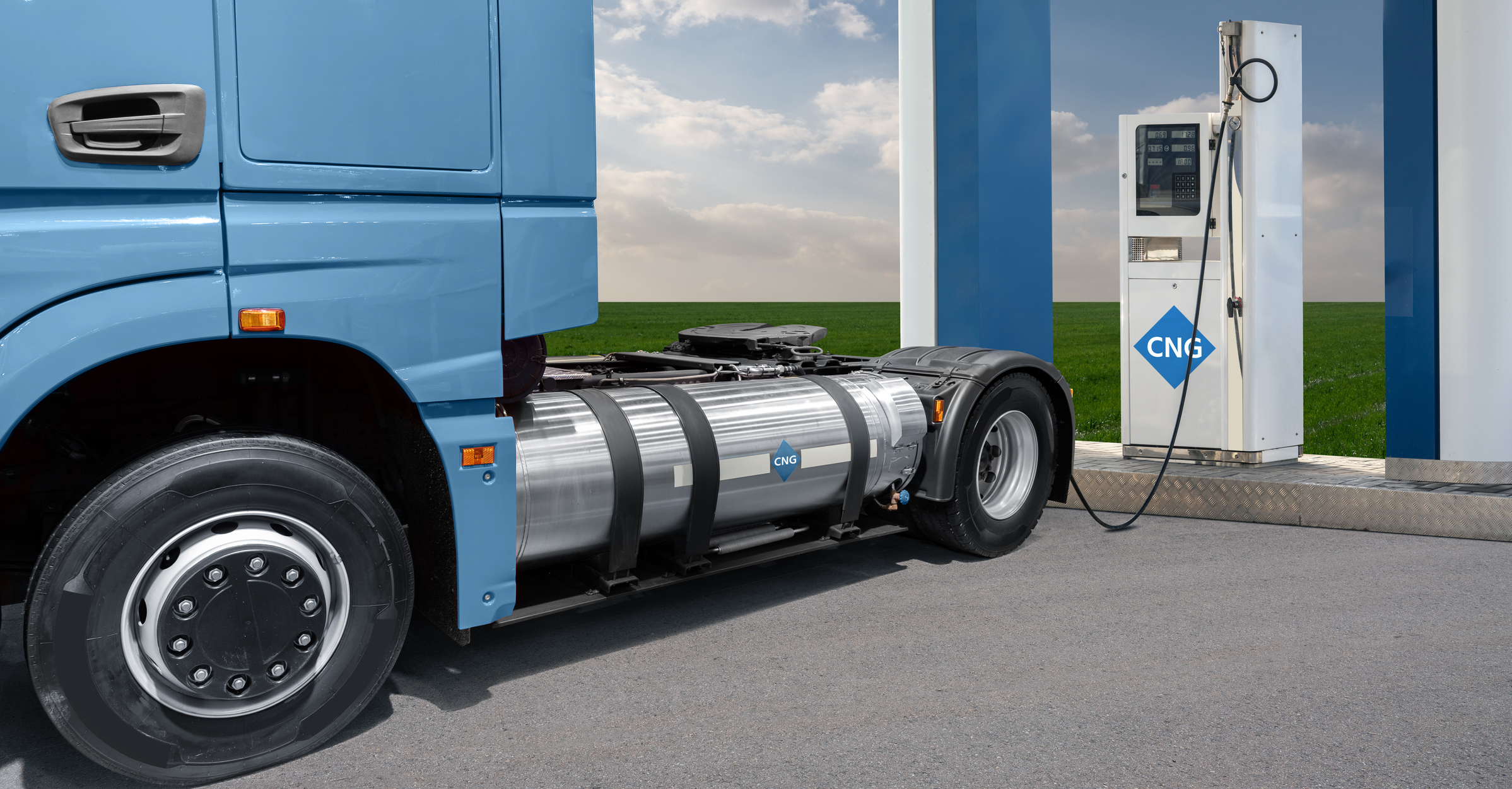
Is Investing into CNG Worth it if Electrification is the Long-Term Goal?
Fleet managers know firsthand the frustration of trying to electrify a fleet today. Between COVID-19 factory closures and chip shortages that have led to continuous delays of EV shipments, many fleet managers have been left with their hands tied. As a result, many are looking into other options that can help their fleets meet sustainability commitments in the meantime.
CNG is an alternative fuel that has been used in fleet for decades. There are over 175,000 CNG-powered vehicles in the US today and over 23 million worldwide. Most commonly, public transportation buses and various medium- to heavy-duty trucks run on CNG today. Still, fleets can be wary of investing into another type of vehicle knowing that EVs are the end goal.
So, the question is, is it worth investing into CNG until EVs become widely available? Can this be a viable option for fleets struggling to meet sustainability goals today? Let’s discuss.
CNG’s potential
Natural gas is a fossil fuel that is found deep below the Earth’s surface, just like petroleum and diesel. Unlike other fossil fuels, however, natural gas is considered the most environmentally friendly. It burns cleanly, emitting less than half the amount of greenhouse gases as other oils. Because of this, natural gas is an ideal alternative fuel for heavy-polluting trucks and other vehicles.
There are two options for fleets looking to transition to natural gas over gasoline or diesel. The first option is adopting natural gas vehicles (NGV) which are designed and optimized to run on natural gas. There are over 100 models of NGVs on the market, though there are not currently any CNG cars on the mainstream market in North America. Still, for fleets with heavier duty vehicles, replacing traditional ICEVs at the end of their lifecycles with NGVs is a relatively simple swap.
The other option for younger fleets who might have several years left with their ICEVs is converting these vehicles to be CNG-compatible. Professionals can use retrofit systems and kits specially designed to convert a diesel engine to a CNG engine. Diesel and CNG engines already work similarly, so minor modifications like changing the flammability and ignition temperatures and oxidation catalyst make it possible to convert the engine. One modification that requires a greater change is the fuel storage space. While ICEVs have a tank within its body for holding liquid gasoline or diesel, NGV’s require a high-pressure cylinder at the rear of the vehicle for storing the compressed gas.
Is it worth the investment?
Now, the question we want the answer to. Is it worth investing into natural gas today with mass electrification on the horizon? There are several different points to look at, from vehicle and fuel cost to accessibility to long-term fleet strategies.
Pros
Availability: One of the obvious pros in this argument is the immediate availability of NGVs versus the lack of EVs in the market today. Many electric vehicles have a delivery delay of up to 18 months, and even these dates are constantly getting pushed back due to semiconductor chip shortages and factory closures. For fleets needing to meet government- or company-mandated emissions goals, NGVs could be an immediate solution.
Sustainability: The next pro is another evident reason for why natural gas is considered an ideal alternative fuel for fleets. It produces the least amount of greenhouse gases of any fossil fuel, resulting in a 20 to 90 percent reduction in the emissions of different GHGs. For fleets looking to go even further, CNG produced from biogas (which is a fuel made from organic matter) delivers an even greater reduction in emissions from the point of fuel production to combustion.
Cost: Along with the environmentally concerned, NGVs have piqued the interest of cost-conscious fleets. With global fuel prices consistently rising, the stable and low price of CNG becomes an attractive option. It can cost as little as half the price per gallon compared with gasoline. Additionally, with 98 percent of natural gas in the US coming right from North America, CNG prices stay relatively stable compared to commonly imported fuels.
Cons
Finite supply: While considered the cleanest of the group, like all fossil fuels CNG is still a nonrenewable resource. This means that though it can be a great temporary solution for many fleets, it cannot solve the long-term problem. Experts argue that the world has enough natural gas to last anywhere from 50 to 100 more years. Regardless of the exact number, however, the bottom line is that it is not something fleets can rely on indefinitely. For fleets looking for a more permanent solution, this could be a major deterrent.
READ MORE: Will CNG be a Stop-Gap Solution to the EV Shortage?
Refueling: Accessibility to CNG fueling stations can be another obstacle for fleet managers to tackle should they choose to adopt NGVs. There are around 1,600 CNG fueling stations in the US today compared to over 145,000 gasoline and diesel stations. What’s more, the majority of these stations are in New York and California, where NGVs are more common. This can make it very impractical for fleets in other states looking to switch to CNG. Even if fleets install a CNG refueling station on their own grounds, refueling out on the road can be a significant challenge.
Vehicle range: The shorter range of CNG-powered vehicles is another major disadvantage for fleets. For vehicles that drive long distances or have the engine running all day, this means refueling is needed more frequently than with a gasoline or diesel vehicle. While this isn’t too big of a problem cost-wise, as CNG is significantly cheaper than traditional fuels, it certainly exacerbates the challenge of finding CNG fueling stations while vehicles are in service.
Bottom line
Pros and cons considered, the decision to switch from traditional fuels to CNG depends on each fleet’s daily operations and needs, short-term goals and long-term sustainability strategy. Fleets with mostly heavy-duty vehicles, for example, might feel that the prospect of electrification is too uncertain. For them, CNG would be the perfect solution until heavy-duty electric vehicles become available. For more mixed fleets, CNG could be a partial solution in combination with EVs, FCEVs or other alternative fuels. In either case, the question of investing into NGVs being worth it for fleets can be a definitive yes or no depending on the individual fleet.
If you’re interested in finding out about other sustainability solutions for your fleet, schedule a demo with a member of our analytics team today.



